|
There are a plethora of creatures that dominate the D&D multiverse. Some haunt your nightmares, while others inspire your dreams. They pour from beyond the stars and leak from the depths of the underworld. And I love them all. And, not unlike Pokemon, there are many different types (though I wouldn't recommend catching all of them). ABERRATIONSAberrations are creatures that are utterly alien. Many of them have innate magical abilities drawn from their psionic mind rather than the mystical weave of the world. Iconic Aberrations are Aboleths, Beholders, and Mind Flayers. BEASTSBeasts are non-humanoid creatures that represent the natural part of this fantasy world's ecology. Some of them have magical powers tied to the complex natural weave, but most are unintelligent and lack any frame of society or language, aside from pack dynamics and simple ideas. Beasts include all varieties of ordinary animals, dinosaurs, and the giant versions of animals (yes, there are giant deer; don't hit them with your cart). CELESTIALSCelestials are creatures native to the Upper Planes. Many of them are the servants or hands of deities, employed as messengers, voices, or agents in the mortal realm and throughout the planes. Celestials are good by nature, so the exceptional celestial that strays toward the fallen path is a horrifying threat. Obviously, iconic Celestials are Angels, Couatls, and Pegasi. CONSTRUCTSConstructs are built for the job, not born. Some are programmed by their creators to follow a simple set of instructions, while others are imbued with sentience and capable of independent thoughts and feelings. Iconic constructs are usually Golems, but there are others native to the plane of Mechanus, like Modrons, that were constructed by the raw will of other powerful creatures. DRAGONSHere they are, ladies and gentlemen: the staple of the game. Large reptilian creatures of ancient origin and tremendous power. True dragons, good and evil, are highly intelligent and have innate magic. Also in this category are creatures that are distantly related to true dragons, but are less intelligent and much less magical, such as Wyverns and Pseudodragons. ELEMENTALSElementals are creatures native to the Elemental Planes (Earth, Fire, Water, and Air, usually). Some creatures of this type are little more than animate masses of their element, including creatures simply called elementals. Others have biological forms infused with elemental energy. The races of genies, including djinn and efreet, form the most important civilizations on the elemental planes. Other elemental creatures include Azers, Invisible Stalkers, and Water Weirds. **DM Note: The elementals in Io are considered one of the Primal Forces responsible for the birth of the universe, so the four main Elemental Planes have transitional planes (making 8 in total), and thus there can be "hybrid" elementals, but that is unique to my world.** FEYFey are magical creatures closely tied to the forces of nature. They dwell in twilight groves, mystical bogs, and misty forests. In some worlds, they are closely tied to the Feywild. Some are also found in the Outer Planes, like Arborea and the Beastlands. Iconic Fey can include Dryads, Pixies, and Satyrs. There are also very powerful Fey, called Archfey, that can rule over the Feywild and may make deals with mortals in exchange for arcane power (see: Warlock). FIENDSFiends are wicked creatures native to the Lower Planes. A few are servants of deities, but most labor under the leadership of archdevils and demon princes. Evil priests and mages sometimes summon fiends to the material world to do their bidding (but such tethers of subservience are often haphazard). If an evil Celestial is a rarity, a good Fiend is almost inconceivable. Iconic Fiends are Demons, Devils, Hell Hounds, and Rakshasas. GIANTSGiants tower over humans and their kind. They are humanlike in shape, though some have multiple heads (Ettins) or deformities (Fomorians). The six varieties of true giant are Hill Giants, Stone Giants, Frost Giants, Fire Giants, Cloud Giants, and Storm Giants. Besides these, creatures such as Ogres and Trolls are also considered giants. HUMANOIDSHumanoids are the main peoples of the D&D world, both civilized and savage, including humans and a tremendous variety of other species. They have language and culture, few if any innate magical abilities, and a bipedal form. The most common humanoid races are the ones most suitable for player characters: humans, dwarves, elves, and halflings. Almost as numerous, but far more savage and often evil are the branches of goblinoids (goblins, hobgoblins, and bugbears), orcs, gnolls, lizardfolk, and kobolds. MONSTROSITIESMonstrosities are monsters in the strictest sense - frightening creatures that are not ordinary, not truly natural, and almost never benign. Some are the results of magical experimentation gone haywire (like owlbears), and others are the product of terrible curses (like minotaurs). They defy categorization, and in some sense serve as a catch-all category for creatures that don't fit into any other type. OOZESOozes are gelatinous creatures that rarely have a fixed shape. They are mostly subterranean, dwelling in caves and underground spaces and feeding on waste, carrion, or creatures unlucky enough to get in their way. Black pudding and gelatinous oozes are probably the most recognizable. PLANTSPlants in this context are vegetable creatures, not simply ordinary flora. Most of them are ambulatory, and a few are carnivorous. Most think of the shambling mound or the treant, but fungal creatures like the gas spore or myconid also fall into this category. UNDEADOnce-living creatures brought back to a horrifying state of undeath through the practice of necromantic magic or some wicked curse. Iconic undead include walking corpses, such as vampires and zombies, as well as bodiless spirits, like ghosts and spectors. UP NEXT
Before we delve into our individual monsters, we'll first identify and define what makes them special in how they move and sense, and then understanding what makes some of them LEGENDARY. After that, we'll start moving through nearly 30 years of lore. Let's get cookin'. I'll see you at the table. ...With a cup of coffee. -Adamus
0 Comments
Why This One?
The first creature I played in 4th Edition was a Dragonborn Ranger. I loved the idea of dual-wielding swords and breathing lightning. It was dream come true.
I was mobile, strong, and very dangerous up close. I didn't have a bunch of Hit Points, but my enemies were often dead before they could deal much damage. I was beautiful. And with many fond memories flooding back, I figured I could ride this momentum into our first main build in this system. 1) Ability Scores, Racial Improvements, and Distribution
Though I'm usually in favor of rolling for my ability scores, luck tends to kick me in the face for this edition. It is strangely much better to go with the standardized heroic array found in the Player's Handbook. So, for each of these builds going forward, our choices are: 16, 14, 13, 12, 11, and 10.
RANGER Key Ability Scores: Strength, Dexterity, Wisdom Dragonborn Ability Score Improvements: +2 Strength, +2 Charisma So, the race bonus didn't entirely line up with my needs, but I didn't really care. Plus, since we're building each of these to LEVEL 4, so I've got an ability score increase to think about too. Let's flesh out my scores. STR = 14+2 = 16 +1 at Level 4 = 17 (+3) DEX = 16 (+3) CON = 12 (+1) INT = 11 (+0) WIS = 13 +1 at Level 4 = 14 (+2) CHA = 10+2 = 12 (+1) 2) Race Features
DRAGONBORN
Pretty run of the mill here. Medium creature, moves 6 squares each round, no darkvision (bummer). Draconborn Fury - when I'm Bloodied (down to half or below half my Hit Points), I get a +1 bonus to all my attacks. Draconic Heritage - makes my Healing Surge value bigger (1/4 my total HP + my Constitution modifier). DRAGON BREATH Power - the reason I took the race in the first place... An excellent Encounter Power. 3) Style, Powers, and Feats
Rangers operate from two main battle paradigms: Ranged and Dual-Wielding. I'm going with the latter, and fulfilling my original idea of an up-close Striker. This choice also grants Toughness as a Bonus Feat.
On top of this, a Ranger gains the Hunter's Quarry feature: as a Minor Action, you can designate the nearest enemy to you that you can see as your Quarry. Once per round, you can deal extra damage to that quarry when you hit them, and that damage increases every 10 levels or so (ours will be at +1d6 for now). At level 1, I need to select 2 At-Will Powers, 1 Encounter Power (useable once per fight), and 1 Daily Power, plus my Racial Power. Level 2 I get a Utility Power, Level 3 another Encounter Power, and Level 4...an ability score increase. Also, at Levels 1, 2, and 4, I select a Feat. At-Wills are pretty obvious here: 1) Twin Strike - effective double attack. 2) Hit and Run - run past, slice through, keep running and no Attack of Opportunity. Encounters Racial) Dragon's Breath - we'll go with lightning, I think. :) 1st Level) Evasive Strike - I can shift around the board 2 squares before or after the attack, and I deal double weapon damage + my Strength modifier. 3rd Level) Thundertusk Boar Strike - another double attack with a push; if both attacks hit, I push 'em a number of squares equal to my Wisdom Modifier (which I want to increase!). Daily 1) Hunter's Bear Trap - Double weapon damage + Strength + slowed target + 5 ongoing damage if they can't save to stop it. Ha. Utility - Encounter 2nd Level) Yield Ground - triggered by being hit, I can move away and gain a +2 bonus to all of my defenses. Gotta watch myself! FEAT SELECTION 1) Dragonborn Senses - gain Low-Light Vision, and +1 to Perception 2) Enlarged Dragon Breath - increases the size of my Dragon Breath. Booyah. 4) Dragonborn Frenzy - +2 damage when I'm bloodied. Because often the best protection is to eliminate threats faster, and that's damage. 4) Gear, Skills, and Proficiency
+ For Armor, I'm proficient in Cloth, Leather, and Hide only, so I'll pick standard Hide for a +3 to my AC.
+ Weapons are a little more vast, with Simple and Military grade melee and ranged. Let's snag two Longswords to lay down the law with a little higher accuracy, and a Longbow for good measure. + Defense Bonuses: +1 Fortitude, +1 Reflex + Hit Points at first level end up being only 13 (12+Con modifier), with increases of 5 per level, so add another 15 on for only 28 HP at level 4. Even with Toughness, that only raises it to 33 HP. Argh. We'll see if we can do something about that. + Healing Surges = 7 per day, at 8 HP per surge (thanks Dragonborn). + Trained Skills (+5 training bonus): Dungeoneering or Nature (I pick NATURE), plus four others from a decent list - let's go with Acrobatics, Athletics, Perception, and Stealth. 5) Overview and Future Choices
Basic Melee = Longsword; +8 to hit, 1d8+3 damage
Basic Ranged = Longbow; +7 to hit, 1d10+3 damage At-Will Powers: Twin Strike, Hit and Run Encounter Powers: Dragon's Breath, Evasive Strike, Thundertusk Boar Strike, Yield Ground (Utility) Daily Powers: Hunter's Bear Trap HP: 33 AC: 18 --- (10+1/2 level [2]+Dexterity Mod [3]+Armor Bonus [3] Fortitude: 16 Reflex: 16 Will: 13 Yeah. That's about right. Welcome back, Helaku Stormwind. Let's play. See you at the table. - Adamus What The Black Sheep Did RightSo recently we hit up 4th Edition as a one-shot. One 6-hour foray back into the black sheep of the D&D legacy at level 2, and...it was pretty cool. Now, I'm not new to 4th Edition. I cut my teeth on 1st edition, and scaled those characters through 3.5 and Pathfinder, then we churned out a new campaign in 4th Edition. Sure, there were elements I didn't like - the out-of-left field feel, the power sets, the strange board game nature of it all - but it was still D&D, and we played it through all the same. The mechanics were just the mechanics; we still had our story to tell. Fast-forward to 5th Edition, and our now about 4 years teaching it and running it, and returning to 4th edition is...not that bad. There are a great many things that 4th Edition does very well. 1) Roles are clear. Each class is broken down into one of four main categories of roles: Controllers, Defenders, Leaders, and Strikers. With your lives on the line, and the mechanics to back it up, there's never a question of what role you are supposed to fill; maybe a question of a secondary role, but not the primary. 2) Tactics are KEY. Immediately, in fact. Our first fight we played like 5th edition - Goblins, no trouble, right? Wrong. Each goblin has more hit points than I do (and I'm a Minotaur Warlord), and none of us could go toe-to-toe with any one of them. It's expected at a fight that two things happen - you immediately use your Encounter powers (more powerful attacks/spells usable once per fight) to eliminate threats early and second, you draw fire to the Defender, while everyone else wrecks enemies from a protected position. Oops. 3) Action Economy Works. On your turn, you have a Standard Action, Minor Action, and a Move Action. Now, these aren't necessarily the same as 5E's Action, Bonus Action, and Movement, mainly because EVERYONE has a Minor Action (like drawing a weapon, opening a door, etc.) available, and certain powers or abilities consume one of those three actions. As long as you have the action type available, you can spend the power, so if you've got a power that's a Minor, another a Standard, and another a Move...you're using three cool things that turn. You're not moving, but still, three cool things. Also, also, you can make your Standard into two more Minor Actions instead, making the economy more flexible. When you're learning the game, that can add time, but, just as with any system, you get faster. And, because this system IS so mechanic-driven, it's rare that you'd have a strange interpretation mix-up that would bog down play anyway. 4) All of your stats are important, with three mains. For each class, there are at least three primary ability scores, and each of your powers will use one of them. Often, INTELLIGENCE is one of those, so the worth of your stats is elevated and definitively depends upon your class, which is refreshing. Now I said before that there were certain roles meant to be fulfilled by each class. In a balanced party, you need at least one of each role represented. If you have more, good job, but one of each is definitively needed to avoid a dreaded a TPK. ;) ControllersControllers deal with large numbers of enemies at the same time. They favor offense over defense, using powers that deal damage to multiple foes at once, as well as subtler powers that weaken, confuse, or delay their foes. Wizards are obvious Controllers from the first Player's Handbook, with the Druid, Invoker, Psion, and Seeker joining up from the PHB 2, and PHB 3. DefendersDefenders have the highest defenses in the game and are good for close-up offense. They are the party’s front-line combatants; wherever they’re standing, that’s where the action is. Defenders have abilities and powers that make it difficult for enemies to move past them or to ignore them in battle, taking the fire off the other more "squishy" classes. The proverbial "TANK" of the game, this is where you find your Fighters, Paladins, Warden, and Battlemind. LeadersLeaders inspire, heal, and aid the other characters in an adventuring group. Leaders have good defenses, but their strength lies in powers that protect their companions and target specific foes for the party to concentrate on, as well as strike and give bonus attacks, movement, or defenses to allies. These classes encourage and motivate their adventuring companions, but just because they fill the leader role doesn’t mean they’re necessarily a group’s spokesperson or commander. The party leader—if the group has one—might as easily be a charismatic warlock or an authoritative paladin. Leaders (the role) fulfill their function through their mechanics; party leaders are born through role-playing. Obvious Leaders are found in the Cleric and Warlord, with the Bard (duh), Shaman, Ardent, and Runepriest fulfilling it later. StrikerStrikers specialize in dealing high amounts of damage to a single target at a time. They have the most concentrated offense of any character in the game. Strikers rely on superior mobility, trickery, or magic to move around tough foes and single out the enemy they want to attack. The term we might swing toward them is "DPR" or "damage-per-round," which is our way of saying you deal a bunch of damage to one dude at a time. Not always a glass cannon, the Striker might last a bit longer than a Controller, but still shouldn't act like a tank to survive. Strikers in 4E are found in the Ranger, Rogue, and Warlock (blaster), with the Avenger, Barbarian, Sorcerer, and Monk joining the fray. PerspectiveIf nothing else, I find it enlightening to have the roles well-defined and supported by their mechanics. When learning the game, new players can lean on only the powers they've selected; options are clear, and their expectations are understood.
In a lot of ways, a blank canvas can be terrifying, so the embedded structure of 4th edition helps support new players in selecting limited powers that further their selected role. Because of this, I thought it fun to further explore this through character building. So, for a little while, each Tuesday at noon, expect a bonus blog on character building...and we'll kick it off with the Ranger in 4th Edition. See you there. We've all been there. The group's been together over a year now and things just don't seem right. Johnny's SO ANNOYING - he's late, he's loud, and he repeats himself all the time! Adam doesn't let the DM speak - no one knows what's going on, and Alex is *still* on his phone looking up cat videos. We've fought beholders together, yet we're still not...blending. When a scenario like this presents itself, it's important to take a step back and recognize one big circumstance and answer a question: is it something about today, or has this been a trend? If the former, take a deep breath. Let go of the things that linger, and urge the group to join you in this; you'll all be better for it, and it might help alleviate a few things on people's minds. Everyone's allowed an off-day. If the latter, still take a deep breath, but there might be reason to explore the various facets that can affect a group's alignment (not mechanical alignment, mind you). PersonalitiesThis one's up front because it's the most persistent, and holds up a realistic truth: not all people get along. But it's the WHY that's important, and a personality misalignment is often expressed in MANY ways. It's complicated, which is why it is difficult to explore, but once a player becomes self-aware and cognizant of their own personality or incongruence with others, changes begin to manifest. Awareness goes a long way, and a growth mindset will aid you. It could be as little as the way you say hello, or your brand of particular-ness. Reflection is important in all walks of life - use it. But there are a few more specific elements that one can consider in the group and in life that may augment your perspective at the table. Assuming Intent (especially negative)We reference The Four Agreements quite a lot in the Podcast and in this blog, but SERIOUSLY dudes, it's because it keeps coming up. Inferences are important - they take facts and observable factors, coupled with experience, and help you navigate your world efficiently. However, assumptions about people, their intentions, and intended effects in interpersonal situations...cause pain and misunderstanding. I've had conversations with people where it seems we come to a mutual understanding...only to have them rewrite their own narrative and assume wide-reaching intent, returning angry and confused. I try my best to be Impeccable With My Word - make sure that I am clear and up front - only to have others assume something very different. Assumptions like this at the table only sew misunderstanding and discord. Take people at their word, and if you must assume, give them the benefit of the doubt. Pace, "The Plot", and Obsession With YOUR StoryWhen you are playing, you are furthering "The Plot." That is all. That plot can be role-play heavy, group discussion, combat-driven, a big blender mix of everything... Whatever you decide to engage in at the table...is the Plot of this GROUP STORY. It cannot, and will not, ever be all about you. The speed, or pace, of this story is decided on by the players. The DM is the guide, but not the impending sword-of-damacles wall pushing you in a direction. I've got hooks and floating elements for ya'll, but if you spend 3 hours shopping and everyone's having a good time, then that's the episode, and that's great too. From a player's perspective, placing emphasis on "your story" over everyone else's invalidates the group story, and in case you haven't noticed, this is a GROUP GAME. Now, some players may have more spotlight at certain times than others, and that's totally cool, but that doesn't mean that before that spotlight wasn't also "the plot." If you must be in the spotlight, share it; invite others to come along (they can always refuse). If your character is already doing something, avoid jumping into another person's activity. This is a shared experience...share it. Flow and Resistance + Contributions and WithdrawalsSessions that just plain CLICK are my ultimate goal as a DM. Everybody's rolling, everybody's all in, the rapport is awesome, and everything just...flows. Achieving Flow is described as reaching a supreme "lack of resistance" with the players. Tiny rulings, circumstances, voices, characterization, pace, style...it all works and everyone has invested in each element in play, creating a worthwhile flow. Resistance is felt when players clash over rulings, there's a misalignment of play style, roles, and any moment where things grind to a halt. Sometimes resistance is necessary to clarify rulings and understanding, but there is a particular balance inherent in such clarification, which demands that you ask yourself a very important question: Does it matter? Sometimes we focus too much on micro; take a step back and see if, in the macro, does it matter if the word you use is points or slots? No? Then use what you need and remove your ego from the situation. If it DOES matter, then talk through it, and if your overruled...get over it. You can address it again outside of the game. The other half of this has to do with contributing to the experience of the group or withdrawing from it. This is most often felt when we joke around in the middle of play - which is awesome, by the way. BUT, a quick quip in the middle of a scene contributes to group play, but pulling up a youtube video to show everyone in the middle of a scene withdraws from it. These two sides of the same coin show respect for everyone's play and disrespect for everyone's play. It's a balancing act, and one that will have missteps of course, but must be a skill that is cultivated. If you find a player, or players, are withdrawing from the game (or pulling others to withdraw), it is worth a conversation. Remember, it isn't the jokes, it's the longer, tangental withdrawal, especially if other players are bothered by it. If that's the type of game you agreed to, alright then, but if NOT, check yourself. Ultimately, if it goes against the social contract... Don't do it. I'll say it again, this is a group game. Antagonists In The Party and None Of Us Are PerfectIf players are escalating each other, and failing to take responsibility for such actions, instead citing the other as the problem... Congratulations, you're kindergartners. I'm so proud. Take responsibility for your own actions; if you're perpetually late, fix that. If you seem to clash with another player, discern why (don't just let it sit there, this is an opportunity to grow), and ACT on it. If you always cite others as the problem, and evidence suggests the contrary, then you might be playing victim - own that and grow up.
This might seem like some tough love right now, but a role-playing group is a vulnerable thing. Playing with others can be hard, and this setting is especially beautiful in how accepting it can be. I am so honored to have cultivated a community that legitimately cares about its members and their wellbeing, mental health included, and am horrified when I hear of the awful experiences people have come from. And yet, none of us are perfect. We are all seeking our best selves through play with others, and because we all come from different places, there are bound to be some clashes. These moments, as difficult as they might be, are opportunities to grow, pivot, and reflect. And the community will be there to help you. However, if you find yourself UNWILLING to grow or adapt to smooth things over, if it rallies against your own concept of yourself and "you've tried everything," then maybe this isn't the group for you. Sometimes taking space IS the best course of action; removing yourself from the situation gives context and perspective where none were present before. Luckily, we DO exist in a space where there is always another group to try. :). We'll wait for you. See you at the table. - Adamus PS: keeping this blog and site running takes time, energy, and funding. Consider helping out by visiting my Patreon, The DM's Den, found HERE, for extra benefits, rewards, and products. Have an awesome day. |
Adam SummererProfessional Game Master musician, music teacher, game designer, amateur bartender, and aspiring fiction author. Honestly, I write what I want when I want. Often monster lore, sometimes miniature showcases, and the occasional movie/show review.
Archives
September 2023
Categories
All
|
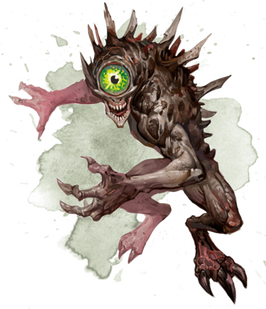
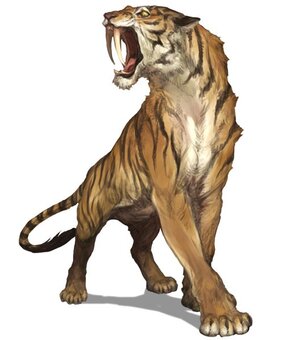
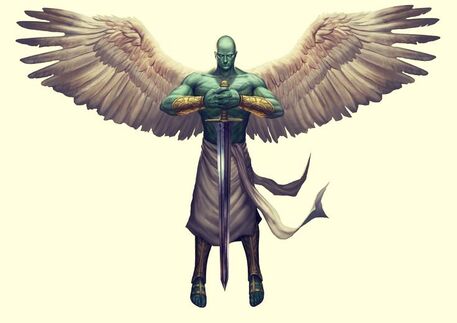
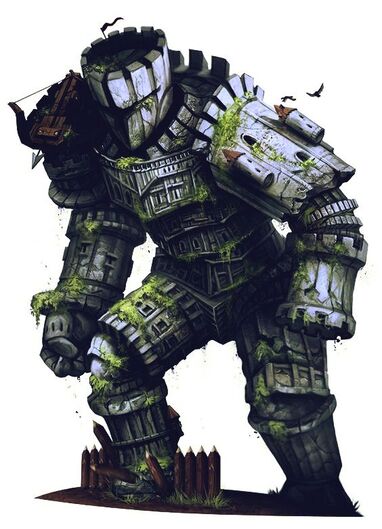
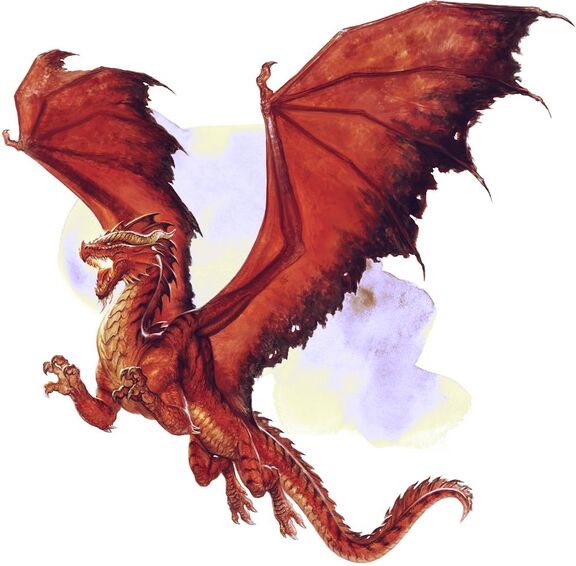
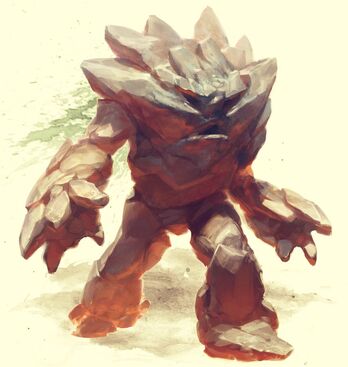
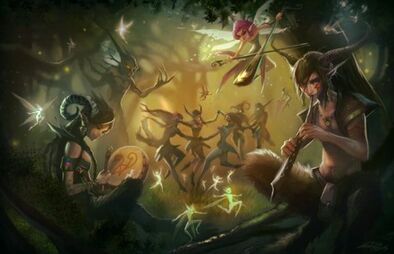
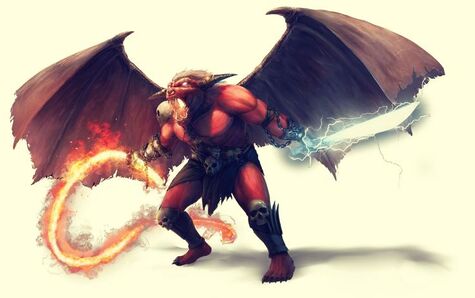
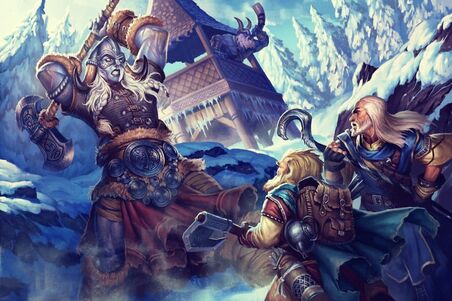
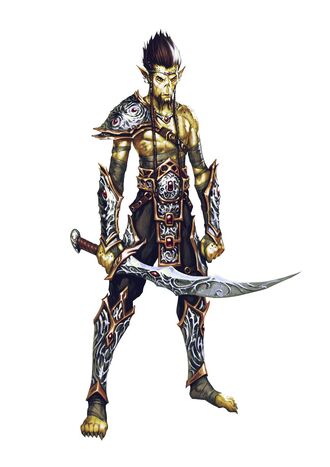
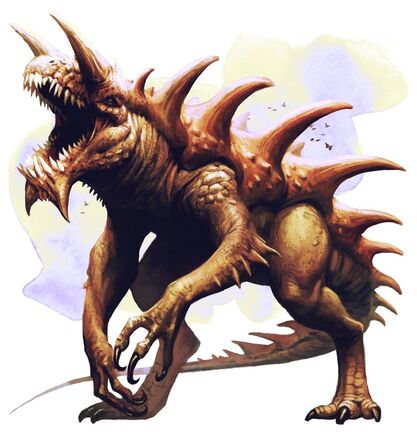
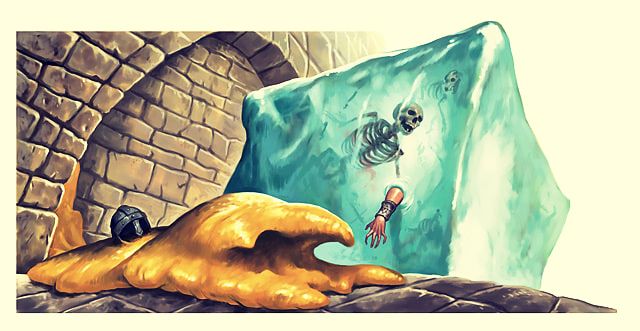
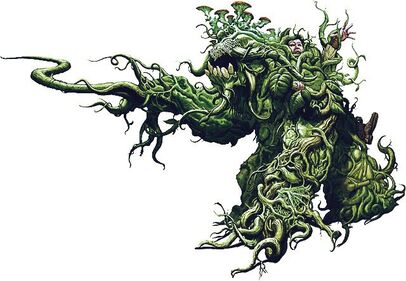
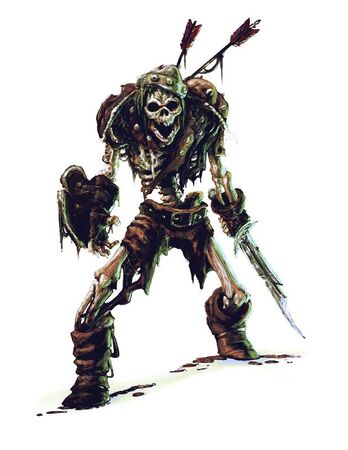
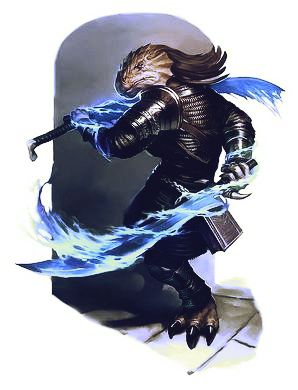
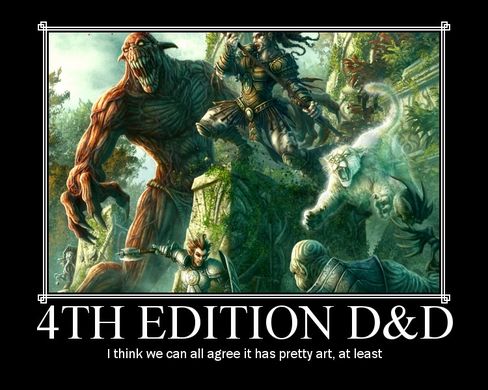
 RSS Feed
RSS Feed